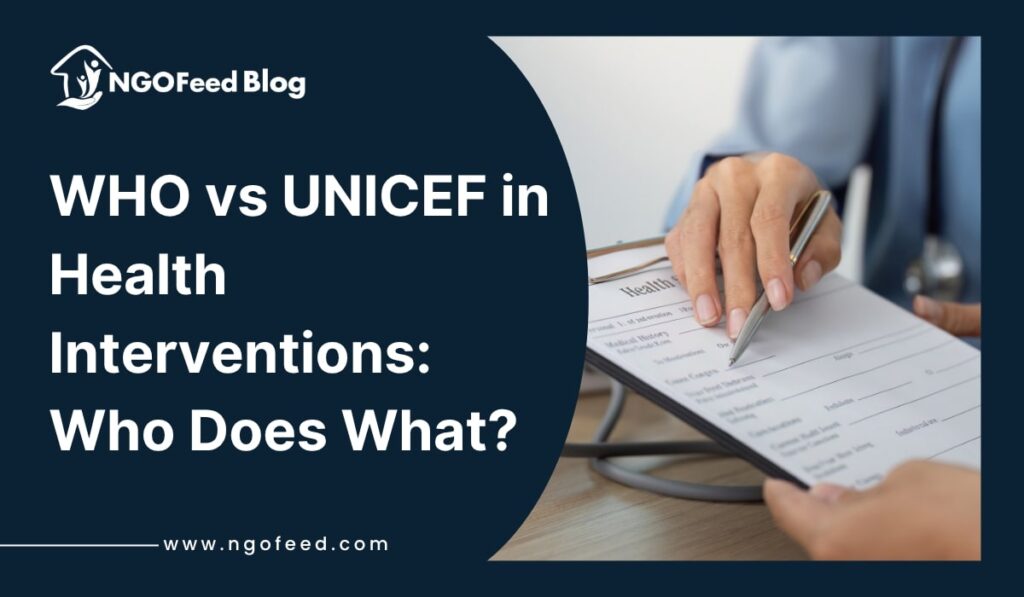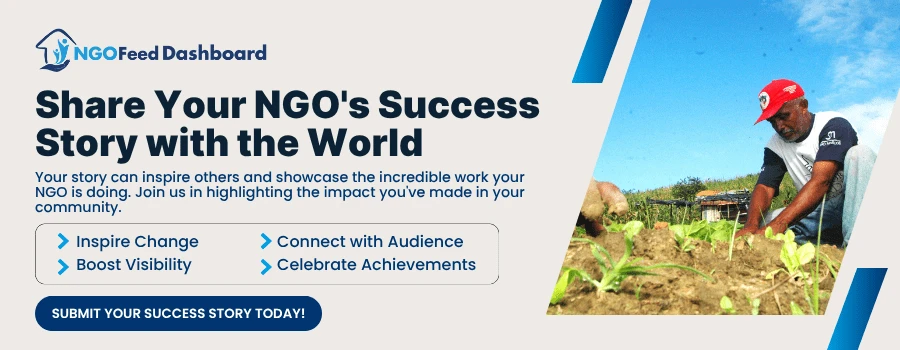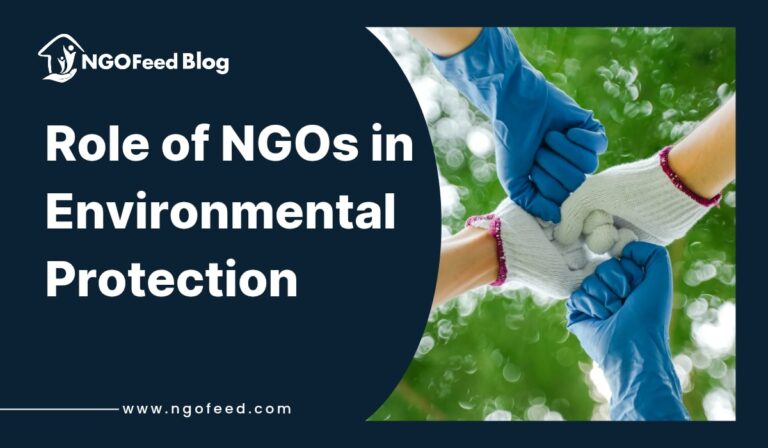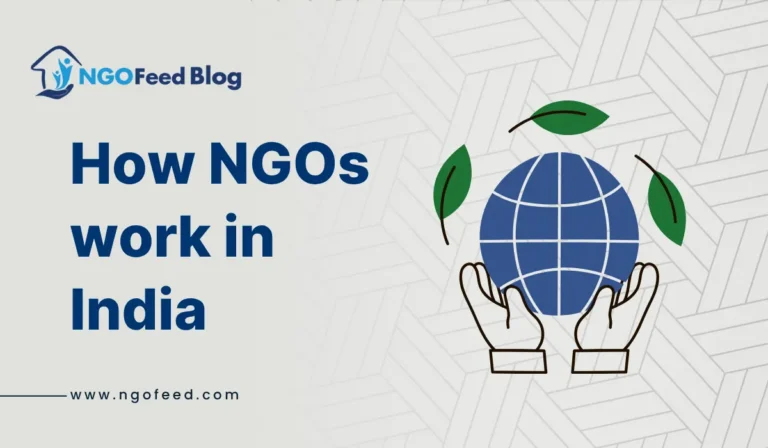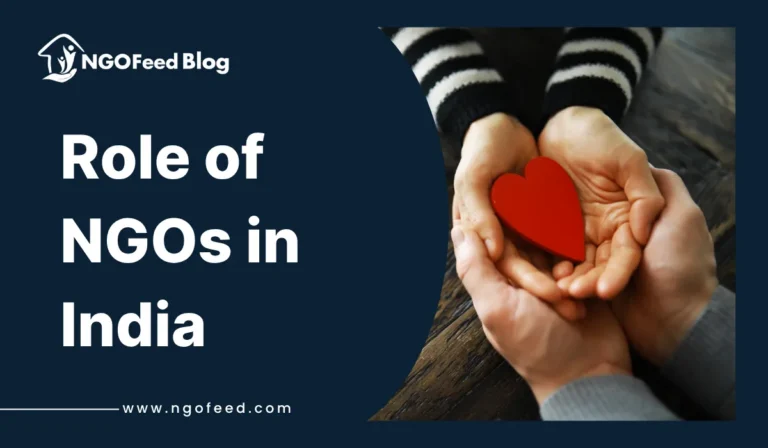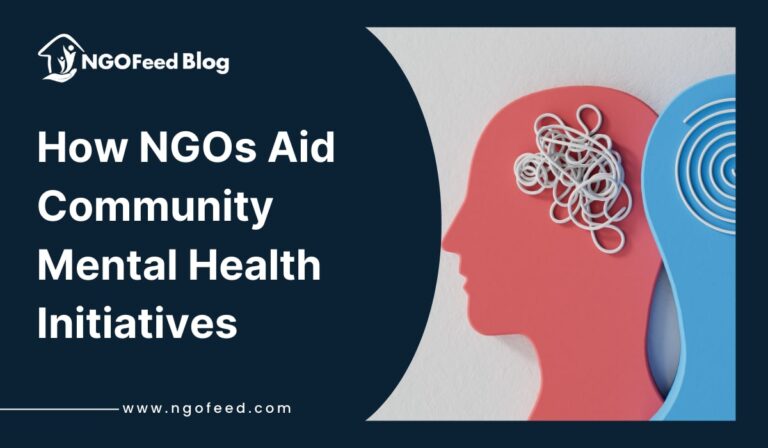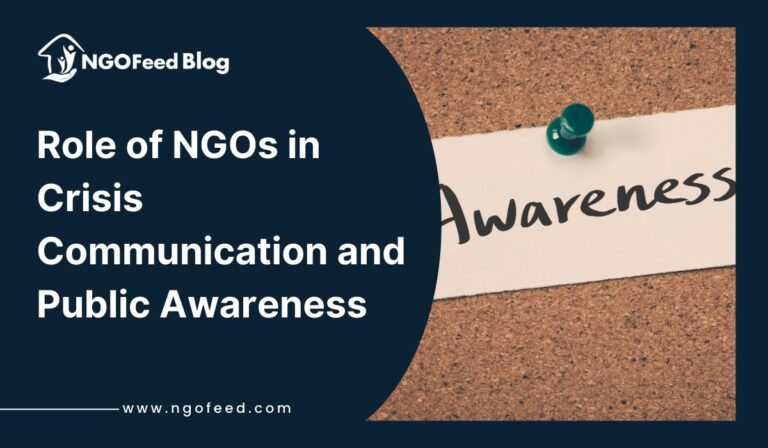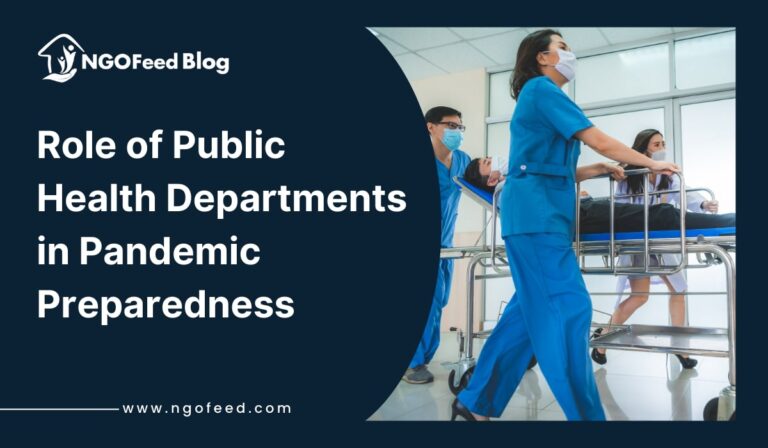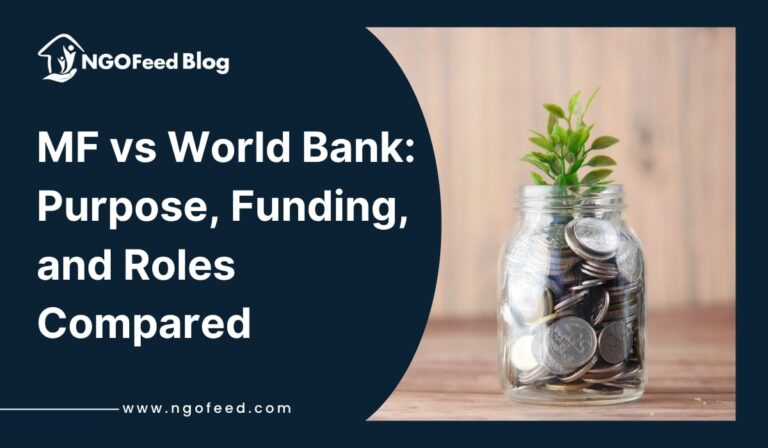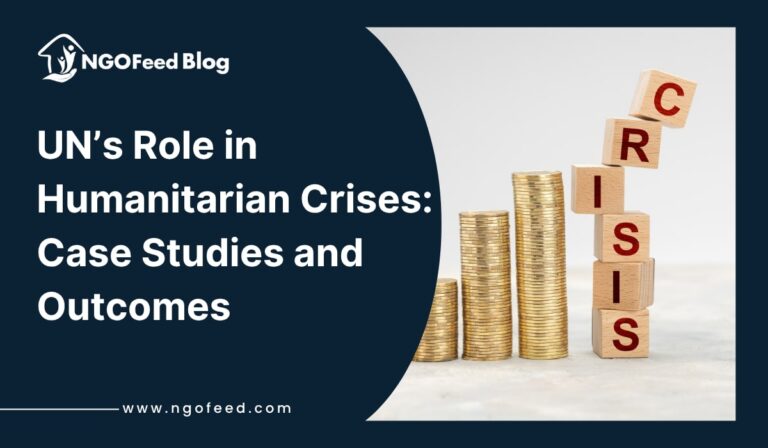WHO Vs UNICEF in Health Interventions: When people talk about global health, two names usually come up: The World Health Organization (WHO) and the United Nations Children’s Fund (UNICEF). Both are part of the United Nations and both are said to have saved millions of lives. But they both have very different jobs. Knowing how their roles are different will help in learning how these health programs actually work in real life.
The easiest way to think of it is this: WHO is the one that sets the rules and provides guidance while UNICEF turns them into action for children and families. WHO provides the science, standards and policies that the government needs to follow. UNICEF then steps in to make those policies real by buying vaccines and medicines, delivering supplies to clinics and schools, and then running community programs so families can actually receive the services. In other words, WHO tells the world what needs to be done and UNICEF helps make sure that it reaches the children who need it most.
Table of Contents
The World Health Organization: Science and Standards
WHO was founded in 1948, soon after the Second World War. This formed because Leaders wanted one international body to guide countries on healthcare and prevent global threats. Today WHO has 194 member states and is based in Geneva, Switzerland.
WHO is often seen as the global health authority because its main job is to provide science, set the standards and form health policies. Governments often turn to WHO when they need advice on how to treat malnutrition, how to create safe maternal health programs or even with things like how drinking water should be like. The guidelines WHO publishes are used by almost every country as a trusted reference.
Another major role of WHO is keeping track of diseases. It collects health information from countries around the world and helps organize responses when new threats appear. For example, WHO declared Ebola a global health emergency in 2014 and again in 2019. It also declared COVID-19 a global emergency in 2020. During the pandemic, the WHO shared advice on testing, treatments, vaccines, and prevention, which most countries followed closely.
Also Read: WHO Global Nutrition Targets 2025
WHO also oversees something called the International Health Regulations. These are agreements signed by nearly all the countries. They require countries to quickly report outbreaks and give the WHO the authority to help organize a global response. Thanks to this system that is set up, the world has a way to act together during health crises.
Beyond emergencies, WHO works with countries to build stronger health systems. It helps train doctors and nurses, gives advice on how to pay for healthcare fairly, and promotes universal health coverage so more people can have access to healthcare. WHO also gathers and publishes key health data like child mortality, life expectancy, and maternal deaths. These numbers show where progress is being made and where more support is needed.
Research is also another big part of WHO’s work. It reviews new scientific evidence, helps run clinical trials and gives expert advice on new vaccines and treatments. For Example, WHO has been involved in testing malaria vaccines and has given guidance on new drugs to treat tuberculosis.
One of the few things WHO usually does not do is hand out supplies itself. It does not deliver vaccines or food to villages. Instead, its role is to guide the world, making sure that health programs everywhere are safe, effective and based on solid science.
Also Read: WHO Mental Health Action Plan to 2030 & Beyond
What UNICEF does for children and families
UNICEF’s work is quite different from WHO’s. Its main focus is on children, mothers and young people and its role is about getting help where it is needed most. UNICEF is actually the biggest buyer of vaccines in the entire world. Through programs like Gavi and COVAX, it has and till date purchases billions of doses every year and makes sure they reach countries that would struggle to get them otherwise. On top of that, UNICEF provides medicines, special foods for children suffering from malnutrition as well as huge amounts of clean water and sanitation supplies.
In schools, clinics and villages, UNICEF is often the UN agency that families see most directly. Its teams and partners organize vaccination drives, run nutrition programs, build clean water systems, and lead campaigns that encourage breastfeeding and good hygiene. Parents often recognize the blue UNICEF logo on the supplies that help keep their children safe and healthy.
When emergencies strike, UNICEF is usually one of the first organizations to respond. Whether it is war, flooding or disease outbreak, UNICEF steps in to provide safe drinking water, set up temporary health services and deliver food for children. For example, during cholera outbreaks, WHO gives the technical guidance on treatment and prevention, while UNICEF provides the vaccines, water, and hygiene kits directly to families at risk.
Also Read: Role of WHO in Healthcare
Vaccination is a clear example of how WHO and UNICEF share the work. WHO checks which vaccines are safe, reviews the evidence and then sets the official vaccination schedules. UNICEF then takes on the practical side by negotiating with manufacturers, buying vaccines in bulk, and making sure they reach clinics and communities. During the COVID-19 pandemic, the WHO gave science and advice, while UNICEF shipped millions of doses to countries around the world.
The fight against polio shows the same pattern. WHO leads the technical work, tracks cases, and runs laboratory networks. UNICEF supplies the vaccines and works closely with communities so families agree to have their children vaccinated. Without the WHO’s science, programs would not know what direction to take. Without UNICEF’s delivery, vaccines would not reach the children who need them.
UNICEF also works beyond health to make sure children have safe environments to grow up in. It helps schools get clean toilets and safe water, trains community health workers, and gives young people access to reliable health information. This shows that UNICEF is not only about emergency aid. It is also about helping to build stronger, healthier futures for children everywhere.
Why WHO and UNICEF depend on each other
When you look at WHO and UNICEF and compare them side by side, it is clear that neither of them could do the job alone. WHO brings the science and sets the standards, but it does not usually deliver services directly to people. UNICEF can reach families with supplies and programs, but it depends on WHO’s expertise to make sure everything is safe and effective.
Also Read: The Role of UNICEF in Menstrual Health and Hygiene
This partnership has led to some of the biggest health successes in history. Polio is now close to being wiped out because the WHO managed the technical work and tracking while UNICEF delivered vaccines and encouraged families to participate. Since the 1970s, child deaths have dropped by more than half, thanks to immunization programs guided by the WHO and carried out by UNICEF. Clean water and sanitation projects are another example. UNICEF builds and delivers them, but they follow standards set by WHO. These projects have saved millions of children from deadly diarrheal diseases.
Working together also makes a huge difference for mothers and newborns. WHO publishes guidelines on safe pregnancy and childbirth, while UNICEF ensures that clinics have the supplies, training, and staff to follow those guidelines. Because of this teamwork, more mothers and babies are surviving and staying healthy.
The message is simple. WHO sets the rules, guidance, and science for global health. UNICEF makes sure families actually benefit from those rules by turning them into real services. Side by side, they achieve progress that neither could reach on their own.
WHO Vs UNICEF in Health Interventions – Why Does It Matter?
The difference between WHO and UNICEF is not about which one is better. They each have their own strengths and those strengths fit together. WHO is the organization that sets the rules, provides the science, and guides global policy. UNICEF is the one that works directly with families, bringing vaccines, medicine, food, clean water, and other support to children and mothers.
Also Read: Role of UNICEF in Education – UNICEF’s Efforts in India
Because they work together, the world has seen huge improvements in child health. Survival rates have gone up, global vaccination campaigns have saved millions of lives and diseases like polio are now close to being wiped out. Without WHO, countries would not have clear standards and coordination. Without UNICEF, those standards would not reach the children who need them most.
Together, they form the backbone of global health interventions.
Frequently Asked Questions (FAQs)
1. What is the difference between WHO and UNICEF in global health?
The difference between WHO and UNICEF is that WHO sets global health standards, provides scientific guidance, and develops policies, while UNICEF delivers health services, vaccines, nutrition, and clean water programs directly to children and families. Together, they ensure health programs reach the people who need them most.
2. How does WHO contribute to health interventions worldwide?
The WHO’s role in health interventions includes creating guidelines, tracking diseases, coordinating responses to outbreaks, and supporting countries in building strong health systems. WHO also oversees the International Health Regulations, monitors epidemics like Ebola and COVID-19, and provides advice on vaccines and treatments.
3. How does UNICEF help children and families with health programs?
The UNICEF role in child health focuses on delivering services directly to families. It purchases vaccines, distributes medicines and nutrition supplies, builds clean water and sanitation systems, and runs vaccination campaigns. UNICEF also provides emergency relief during disasters, war, and disease outbreaks.
4. Can WHO and UNICEF work together on health projects?
Yes. WHO and UNICEF collaboration is crucial for successful health programs. WHO provides scientific guidance and sets standards, while UNICEF delivers vaccines, medicines, and clean water to communities. For example, in polio eradication, WHO manages technical tracking while UNICEF ensures families receive vaccines.
5. Why is the partnership between WHO and UNICEF important for global health?
The WHO and UNICEF partnership ensures that global health policies are not only safe and effective but also reach children and families. Their teamwork has improved child survival rates, supported global vaccination campaigns, and helped reduce maternal and newborn deaths worldwide. Without this partnership, health standards would not translate into real-world services.

